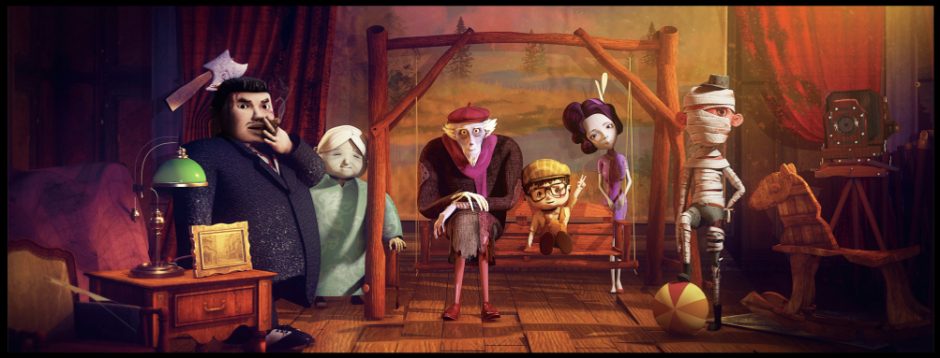The task of the second week is to start being access to the particle system and start some preview videos. I have been in touch with particles in Maya before, so I know some wind field, gravity and particle properties, so the content of this lesson is not very difficult for me to understand. Then I think the difficulty in this part is to understand every node, including increasing the points of the surface, and some methods of using spheres instead of particles, which I have learned and will continue to improve.
I have to say that this part is really cool, but it also contains a lot of simulations and details. It requires me to understand the function and usage of each node of the pop node. Then I made an additional video according to what I learned. Of course, there are many mistakes in this process. I think learning software is facing with the mistakes and exercising the ability to solve problems .
1 . Manipulate attributes on points, primitives, vertices, packed geo
(1) Update view mode
- Auto update — update at once when value changes
- On Mouse up — update when click mouse
- Manual — the most efficient way (can do some certain steps and then refresh it)

(2) Shortcut
- Null — it does not do anything like sth empty
- press A and drag in centre can rearrange them / press L to lay out them in an elegant way
- press J and left click to select them all can connect them in a chain and with Y to cut
- shift — add selection
(3) Animation panel
- play — arrow upper play backward — arrow down
- left arrow — previous frame right arrow — next frame
- Cmd+left arrow — first frame Cmd+right arrow — last frame (also the key points)

(4) attributes on points, primitives, vertices, packed geo

(5) UV
2 . Vop and Vex
- First, create a box, select the node and press I to enter
- Create an attribute wrangle node and connect it to the box node
- Select the attribute wrangle node, press P to open the parameter panel, and enter the vex code in the red area
- Click the red area and press Alt + E to open the vex code editor
Attribvop (no code)
Vex
- Int : integer — mostly used to represent the sequence number of points, lines and surfaces, as well as transformation
- Floating : point number (can be understood as a decimal) – used to represent floating-point scalar value
- Vector2 : two dimensional vector — mostly used to represent texture coordinates
- Vector : three dimensional vector — mostly used to represent position, direction, normal, colour RGB
- Vector4 : four dimensional vector — mostly used to represent homogeneous coordinate position and colour RGBA with transparent channel
- Matrix2 : two dimensional matrix — mostly used to represent 2D rotation matrix
- Matrix3 : three-dimensional matrix — mostly used to represent 3D rotation matrix, 2D transformation (displacement, rotation, scaling) matrix
- Matrix : four-dimensional matrix — mostly used to represent 3D transformation matrix
- String :”this is hello world”
- Array : ordered data combination
- Struct : structure
- BSDF : bidirectional scattering distribution function
Noise
Bind also the function of input and output
- Bind has the ability to read and write attributes, import attribute can only read attributes
- The data of bind operation is the object bound by the current context, which is the first input of VOP node. Import attribute can read the attribute of any input

3 . Dop with particle simulations
N — change the mode

Timeshift — for freeze frame
popnet

Polygon object cannot directly be modified by press enter, it will covert to the mode of selecting the points or edges and adjust them by pulling.
So the polygon need to be added a pack node so that it is one entity

geometry convert to polygon — unpack
popnet
- popobject — container full of particles
- popsolver — like the toolbox with physics logic
- popsource — solving
4 . Adding force to the simulation
Gravity (down)

Pop wind / Pop force (add force)

Scatter — add point on the surface (change the force count)
render flipbook

change the life expectation
5 . Simple magical effect / disappearing object
Pop force — Change amplitude (flow away )
Pop drag — change air resistance
Point velocity — increase the velocity
Delete — remain part of the particle effect
Pop source — increase birth rate / change life expectancy / change live variance / change interpolate source (back & forward) / change interpolation method
Test 01 & 02
Add the sphere to replace the particle (due to some display that the particle is like ball not small enough) so make the size of the sphere smaller like the particle
6 . Preview simulations

pop source 
pop drag

pop force 
pop wind

pop net 
scatter

point velocity 
delete

sphere (change to polygon) 
attribvop (change the scale)

ramp 
output
Render Flipbook — Particle
Q&A
- Why the particle in my scene seem to be larger and more blurred than the tutorial.
- What is the difference between the output and blind export?
- Now I can keep up with the tutorial, but if I have to do it myself, I may still not have this mode of thinking. How to exercise it depends on finding different cases to practice.
- Do some nodes need to be specially remembered or need a lot of practice to get familiar with them.
- How to improve render flipbook quality.
Extra work (0201)


